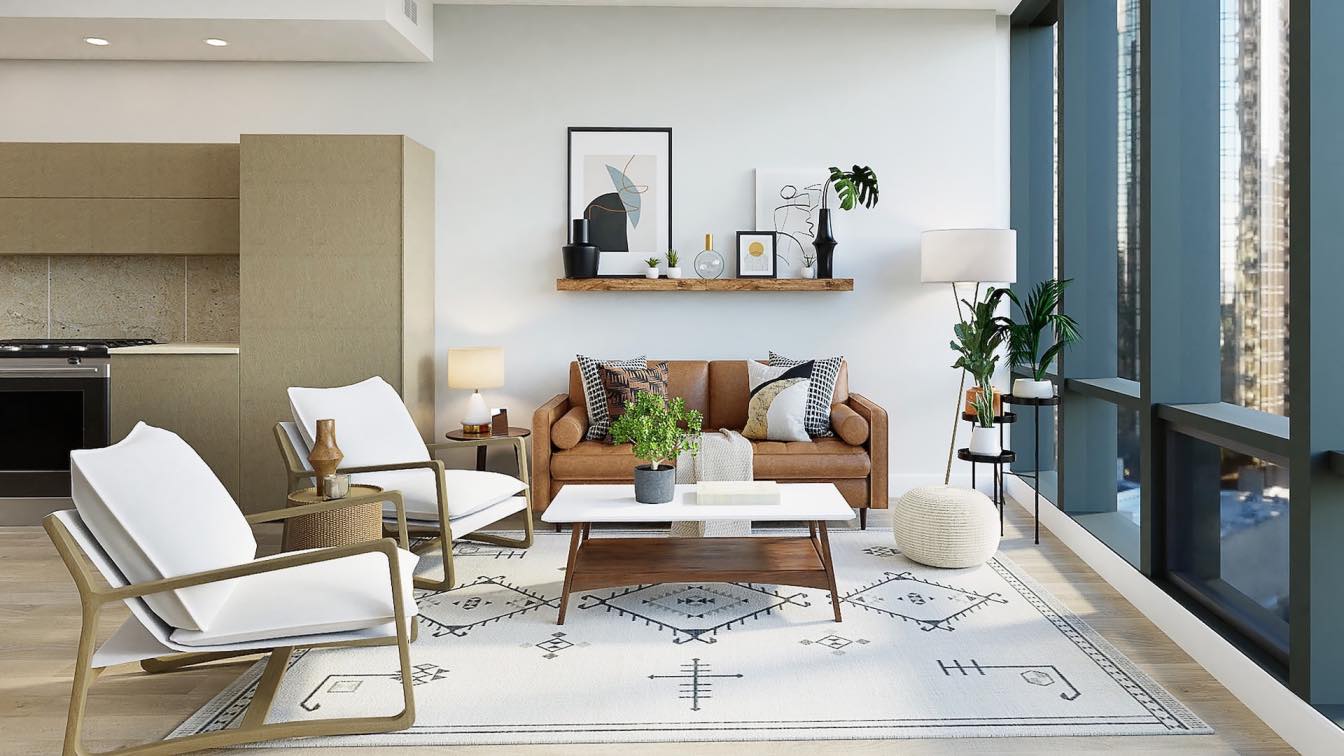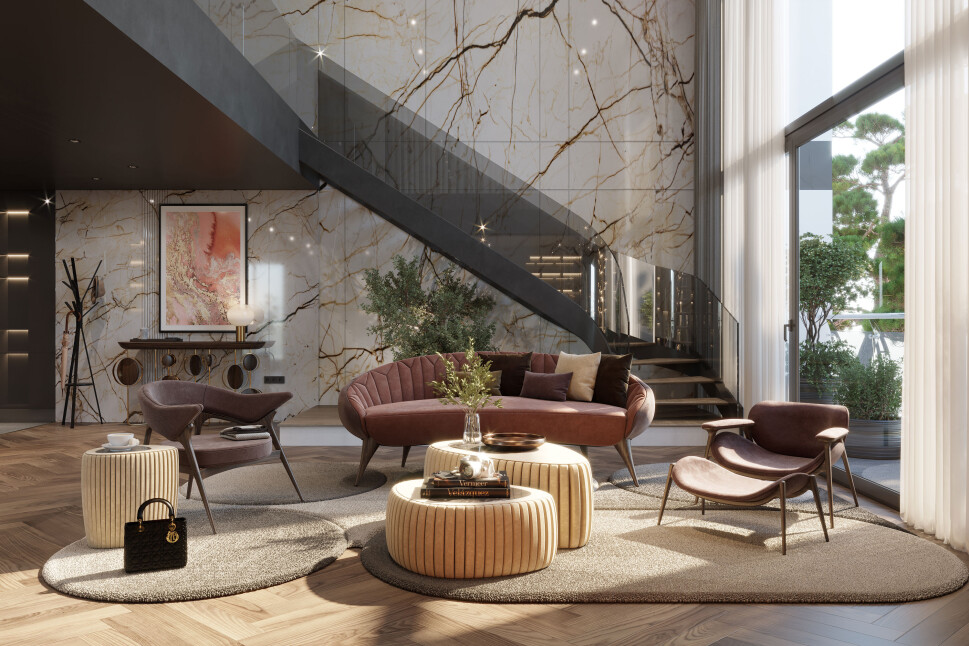Redefining Areas: The Role of Interior Architecture Miami in Modern Design
Redefining Areas: The Role of Interior Architecture Miami in Modern Design
Blog Article
Why Understanding the Concepts of Interior Layout Is Crucial for Effective Area Planning
Comprehending the concepts of interior decoration is fundamental to efficient space planning, as it lays the foundation for producing settings that harmonize performance with visual charm. Crucial aspects such as percentage, balance, and circulation are not merely ornamental factors to consider; they are important in maximizing how a room is utilized. When these principles are attentively used, the result is an ambience that encourages both efficiency and health. Yet, numerous forget how these ideas link with practical applications, causing missed out on opportunities in style efficiency. Exploring this link discloses understandings that could change any kind of area.
Importance of Room Preparation
Area planning is a basic element of interior decoration that significantly affects the performance and aesthetics of a room. It entails the calculated plan of furniture, components, and architectural elements to maximize making use of available area while enhancing the total individual experience. Effective room preparation addresses various factors, consisting of flow, accessibility, and the certain needs of the owners.
One of the key advantages of space preparation is its capability to improve spatial performance. Interior design studio Miami. By attentively organizing a layout, developers can guarantee that every area offers a function, decreasing mess and promoting a feeling of order. Additionally, correct area planning cultivates an unified environment, permitting seamless activity and communication within an area
Additionally, effective area preparation takes into account natural light, sightlines, and the connection between various locations. This alternative technique not only boosts the aesthetic appeal yet additionally contributes to the health and efficiency of the occupants. Inevitably, a well-executed room plan is critical in developing a well balanced and inviting environment, making it essential for any interior style task.
Key Principles of Interior Style

One fundamental concept is balance, which can be symmetrical, unbalanced, or radial. Symmetrical equilibrium develops a sense of order, while asymmetrical equilibrium uses a more vibrant visual appeal. One more crucial principle is proportion and range, making certain that the size of furniture and decor elements associate sympathetically to every various other and the overall space.
Color theory likewise plays a substantial duty, affecting mood and understanding. Developers utilize color combinations to stimulate details feelings and enhance the spatial experience. Furthermore, the concept of rhythm involves producing a feeling of activity through repetition of colors, forms, or patterns, guiding the eye throughout the area.
Last but not least, the principle of emphasis directs attention to centerpieces, enabling a clear narrative within the design. Interior architecture Miami. By adhering to these essential concepts, indoor developers can create atmospheres that not just meet practical needs but additionally resonate with the residents on a psychological level
Effect On Functionality and Flow

The setup of furniture, the selection of products, and the integration of modern technology all play crucial duties in achieving ideal capability. Putting seating areas in closeness to offices can help with interaction and partnership, thereby boosting efficiency. In addition, making sure that pathways are clear and unobstructed enables reliable motion, reducing blockage and promoting an all-natural flow throughout the room.
Additionally, integrating components such as illumination and shade can additionally aid in marking locations, making it simpler for people to browse their atmosphere. Thoughtful space planning considers not just the physical aspects of layout however likewise how customers engage with their surroundings. Ultimately, an emphasis on functionality and flow not only boosts the customer experience yet likewise boosts the general performance of the area, creating a setting that fulfills the requirements of its residents while cultivating a feeling of harmony and equilibrium.
Enhancing Visual Appeals and State Of Mind
Three vital aspects-- color, illumination, and texture-- play crucial roles in improving the aesthetics and mood of an interior room. Shade develops the emotional tone; warm colors like oranges and reds stimulate power and warmth, while cooler shades such as blues and eco-friendlies promote calmness and serenity. Selecting a harmonious color palette can transform a space, creating a cohesive and visually appealing environment.
Appearance includes deepness and passion, adding to the responsive experience within an area. A mix of appearances-- moved here smooth surface areas, deluxe fabrics, and natural materials-- can produce visual intrigue and boost comfort. Pairing a soft velour couch with a smooth glass coffee table can produce a her response balanced visual that welcomes communication.
Lighting, typically a neglected aspect, considerably impacts state of mind. All-natural light fosters an open, airy ambience, while purposefully put artificial lights can create heat and highlight building functions. Dimmer switches make it possible for flexibility, enabling for changes to fit various tasks or times of day.
Integrating these 3 aspects attentively not only raises the visual allure of an area but likewise cultivates an ambience that resonates with its intended function, ultimately improving the general experience for its owners.
Practical Applications in Real Life
Using interior decoration principles in reality needs a thoughtful technique that incorporates color, appearance, and lighting right into day-to-day rooms. By comprehending how these elements work with each other, individuals can develop settings that are not just aesthetically enticing but harmonious and likewise practical.
For circumstances, in a tiny living location, using a light shade scheme can make the room feel larger and more open. Strategic use mirrors can enhance natural light and create an illusion of depth. Incorporating various textures through textiles, such as cushions and rugs, can include heat and passion without frustrating the detects.
Illumination plays a crucial role in defining the ambience. Split lighting, containing ambient, job, and accent alternatives, enables versatility in state of mind settings. In a home office, as an example, a combination of all-natural light, workdesk lamps, and ornamental fixtures can boost productivity while keeping a welcoming setting.
In addition, recognizing spatial partnerships and furnishings arrangement can result in improved functionality. By sticking to concepts such as balance and proportion, one can ensure that spaces offer their designated purpose while continuing to be cosmetically pleasing. Generally, useful applications of interior decoration principles significantly boost the view livability and charm of any type of atmosphere.
Conclusion
In verdict, recognizing the principles of interior decoration is important for efficient room preparation, as it fosters an equilibrium between capability and visual appeals. By using essential concepts such as percentage, color theory, and circulation, designers can produce settings that improve both use and visual allure. Eventually, this knowledge adds to the development of areas that not just meet functional needs however also raise the total atmosphere, causing more effective and delightful experiences for individuals.
Recognizing the principles of indoor layout is fundamental to reliable room planning, as it lays the groundwork for developing environments that integrate performance with visual charm.Space preparation is a basic element of interior layout that considerably affects the performance and visual appeals of an area. Additionally, appropriate room planning fosters a harmonious setting, permitting for seamless activity and communication within a space.
Furthermore, the concept of rhythm includes producing a feeling of movement via repetition of shades, patterns, or forms, guiding the eye throughout the area.
In verdict, understanding the principles of interior layout is crucial for effective space planning, as it fosters a balance in between capability and aesthetics.
Report this page